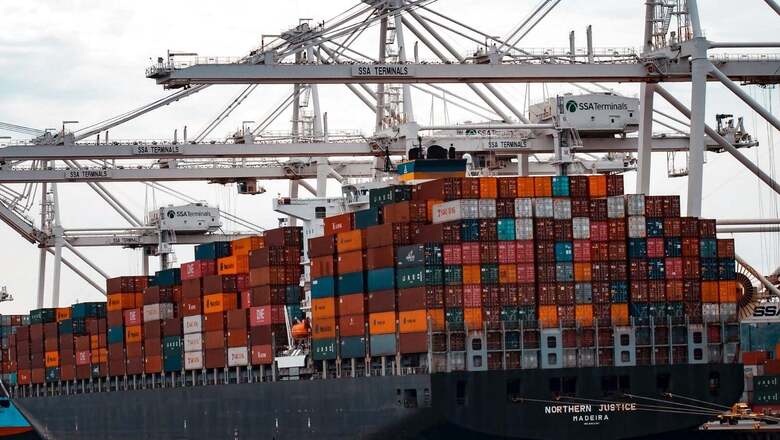
views
India’s worst period of macroeconomic instability is possibly over, and both retail inflation and trade deficit are expected to moderate gradually, according to brokerage Morgan Stanley. It also said the indices measuring global commodity prices are now down 9-25 per cent from their peak.
“These fuel-related global commodities constitute 13.2 percent of India’s CPI (consumer price index) and 33.8 percent of the WPI (wholesale price index) basket… We believe that lower commodity prices and a partial roll back of taxes on petroleum products will help improve the trade balance trend,” Morgan Stanley Chief India Economist Upasana Chachra said in a note. “We believe the worst of macro instability is behind us now, though moderation in inflation and narrowing of India’s trade deficit will be gradual.”
The note expects the country’s retail inflation to increase to 7-7.2 percent in August and remain at 7 per cent in September before moderating gradually. The retail inflation in India, based on the Consumer Price Index (CPI), in July declined to 6.71 per cent, compared with 7.01 per cent in the previous month. It was the easing for the third month in a row.
The food inflation in July 2022 also moderated to 6.75 per cent as against 7.75 per cent in June. Also, India’s industrial production in June 2022 grew in double-digits, and increased 12.3 per cent on a low base.
However, July is the seventh consecutive month when the retail inflation remained above the RBI’s tolerance range of 2-6 per cent. The retail inflation in June had stood at 7.01 per cent, which was slightly lower than 7.04 per cent in May. Inflation in rural areas in June was at 7.09 per cent during June 2022, while that in urban areas was 6.92 per cent.
Morgan Stanley also said India’s trade deficit likely peaked at $30 billion in July. The high trade deficit has prompted economists to revise India’s current account deficit and balance of payments forecasts.
The country’s exports in July rose by 2.14 per cent to $36.27 billion, while its trade deficit almost tripled to $30 billion during the month. Imports shot up by 43.61 per cent to $66.27 billion in the month compared to July 2021, according to the official data.
The trade deficit was $10.63 billion in July 2021. Preliminary data released earlier this month had shown a 0.76 per cent contraction in exports at USD 35.24 billion for July against USD 35.51 billion in July 2021. The trade deficit was pegged at a record $31 billion in the month fuelled by over 70 per cent rise in crude oil imports.
In May this year, Morgan Stanley had lowered its forecasts for India’s economic growth in the next two fiscal years, saying a global slowdown, surging oil prices and weak domestic demand would take a toll on Asia’s third-largest economy.
It had said Gross domestic product growth will be 7.6 per cent for fiscal 2023 and 6.7 per cent for fiscal 2024, 30 basis points lower than the previous estimates.
The cut reflected a pronounced economic impact from the Russia-Ukraine conflict that has driven up crude prices, pushing retail inflation in India – the world’s third-biggest oil importer – to its highest in 17 months.
Read the Latest News and Breaking News here




















Comments
0 comment